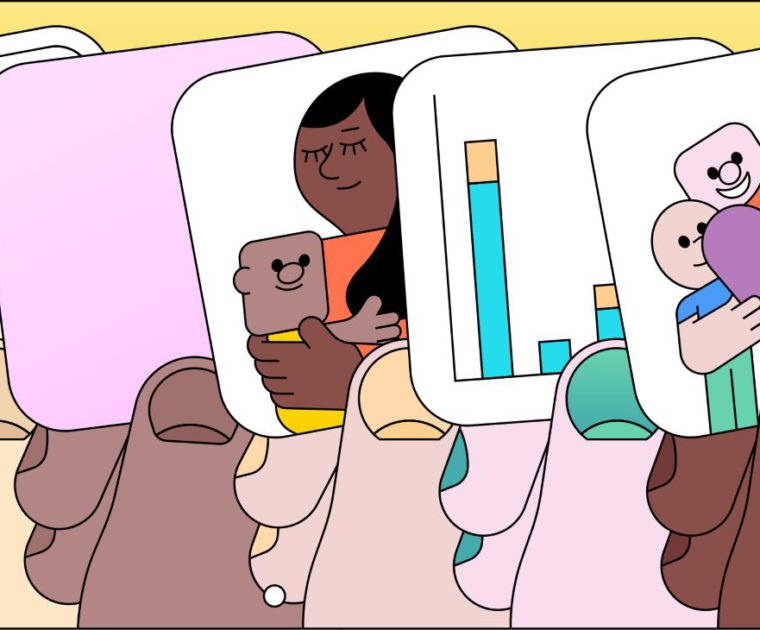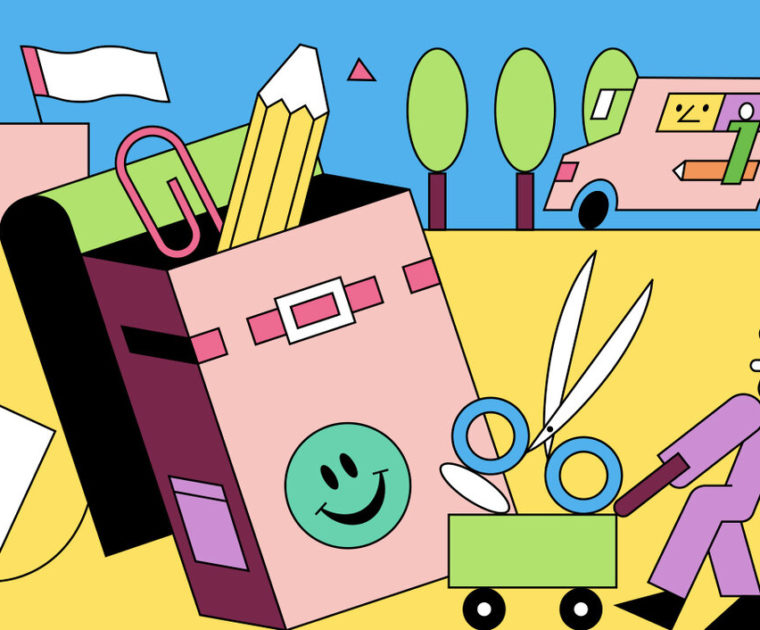It is officially back-to-school time. Every year, parents (and especially students) must face the inevitable: the arrival of midsummer. It brings back-to-school spending, sales, trends, and marketing. Plus tons of back-to-school stats. Tons. So many in fact, we’ve taken the liberty of compiling the key ones for you here in our 2024 Back-to-School Spending Infographic.
The 2024 back-to-school spending season is expected to pack a punch. Consumers plan to spend a total of $126 billion in back-to-school and back-to-college spending.
Let’s dig into the data. If you prefer blocks of text, not a problem – scroll past the infographic, you weirdo.
Wanna drop this sweet little sucker in your own article? Not a problem. Copy and paste the code below. 👇🏽
How Much Back-to-School Shoppers Are Spending in 2024
Total B2S spending is set to hit $39 billion this year. And in light of the current cost-of-living squeeze, parents are focused on getting the most bang for their B2S buck. K12 back-to-school shoppers will spend an average of $875 per household on school-related items, according to the National Retail Federation. They want to make every dollar count. Here’s how they’re shopping:
- B2S shoppers are hitting the stores earlier this year and spending most of their budget (upwards of 66 percent of it) by the end of July.
- Convenience and deals are the main drivers of B2S spending. A major 70 percent say convenience is the number one driver of when and where they’ll check off their back-to-school supply lists. Another 68 percent say deals and big sale events will determine how they shop.
- Shopping sustainably is a priority for four in ten parents this year who intend to buy used or refurbished B2S items.
- Despite the nostalgia of perusing the back-to-school section IRL back in my day, 57 percent of B2S shoppers are logging online to shop the best deals.
Breaking Down Back-to-College Spending in 2024
When it comes to back-to-college shopping, households are expecting to spend about $1,365 this year. And that includes degree-earning moms and dads. With more than 19 million students heading back to college this year, the total back-to-college spending is set to hit $87 billion. Here’s how that spending breaks down:
- The top category for back-to-college spending is electronics, carving out an average $360 per shopper. This is followed by $192 on dorm and apartment furnishings. Then $171 on clothing and accessories, and $149 on food. I can practically smell the microwaved Cup Noodles now.
- Down slightly from their K12 shopping counterparts, only 50 percent of B2C shoppers go online to get their goods.
- Total back-to-college spending is set to be the second highest on record, trailing slightly behind last year’s $94 billion spend.
Deals and Convenience Rule Back-to-School Shopping
Many parents are feeling the cost-of-living squeeze this year. In fact, 73 percent are concerned about the climbing prices of everyday items. Of course, it’s affecting how they shop. In the current environment, the majority of back-to-school purchases will be influenced by deals, promotions, and convenience.
This year, 85 percent of back-to-school shoppers plan to take advantage of deals and promotions. They want more bang for their buck. And they’re shopping the sales to get it. The official start of the back-to-school spending season kicked off with a record-breaking Prime Day event. Sales topped $14 billion for Amazon and its merchants. That’s up over a billion dollars from last year’s previously record-breaking figure. And 48 percent of B2S shoppers planned to take advantage of Prime Day for school essentials.
Convenience is another top driver for where and how back-to-school shoppers shop in 2024. Seven in ten shoppers look for convenience first — even before sales. That means prioritizing easy or free returns without restocking fees and free shipping with order minimums of $30 or so.
And be warned. If back-to-school shopping proves inconvenient, shoppers are fully prepared to switch brands. If their preferred brand is out of stock or if its prices jump significantly, they will switch. 67 percent said they will switch brands if their preferred brand is too expensive. And 62 percent already intend to shop at affordable retailers over their preferred ones. This year, value trumps loyalty when it comes to back-to-school spend.
Spending Categories: Back-to-School Shoppers Are Prepared to Cut Back
School supplies and clothing remain top spending categories this time of year. But with inflation still bossing everybody around, shoppers are prepared to compensate by cutting back. If budgets become too tight, 40 percent of shoppers say they’ll cut back on school supplies. Meanwhile, 28 percent say they’d cut back on back-to-school clothing and accessories.
Overall, here’s how back-to-school spending breaks down on average per child according to the NRF:
- Electronics: $309.35
- Clothing & Accessories: $253.29
- Shoes: $170.43
- School Supplies: $141.62
Compare that to the average back-to-college spending per student:
- Electronics: $359.49
- Apartment & Dorm Furnishings: $192.40
- Clothing & Accessories: $171.06
- Food: $149.71
- Shoes: $112.60
Spending More vs Spending Less
Regardless of whether shoppers say they’re spending more or less on back-to-class shopping this year, pretty much all of them are pointing to inflation as the cause.
According to Deloitte, 67 percent of B2S shoppers say prices are higher this year. And 47 percent report having less money to spend. Average spending per child for middle-income families is down 9 percent year-over-year. 57 percent of those middle-income families say they plan to cut back on other expenses to accommodate this year’s back-to-school spending.
Retailers need to understand that price is of the utmost importance. Discounts, deals, and quality are the big influencers this year. Shoppers want you to deliver value and convenience.
Online Shopping and The Impact of AI
In 2024, you won’t be surprised to hear that over half of B2S shoppers intend to do at least some of their purchasing online. When we rolled out our first Back-to-School post back in 2016, e-commerce accounted for just 7.9 percent of back-to-school spending. In 2018, 23 percent of back-to-school spending happened online. This year, 57 percent of back-to-school shoppers will make some of their purchases online.
The hot new shopping tool this year is generative AI. It may not seem huge, but 18 percent of back-to-school shoppers intend to use AI on their path to purchase. And 23 percent of parents say their kids are using AI in their school work. (That’s up from 15 percent last year.) It seems like AI might be here to stay, especially with 35 percent of back-to-school shoppers saying it’s a powerful tool for their kids’ academic experience.
Gone are the days of heading to a single department store to stock up on all your school supplies. Parents are going online, to AI, and of course to social media for a variety of B2S needs. Keep that in mind as you’re structuring your influencer marketing strategies.
Back-to-School 2024 Is Here!
I can practically smell the fresh notebooks and yet-to-be-sharpened pencils. Ah! Sweet sweet back-to-school season. The bright spot for kids is that going back to school often comes with a healthy shopping allowance.
And parents, well, they (and their wallets) get sort of jammed in between kids and brands. It’s tough working out the logistics of it all. We get it. That’s why we urge marketers to make it easier on parents this year. Deliver great campaigns offering sales and convenience. That way, back-to-school season can be an A+ for us all.
The perk of B2S for marketers is that the shopping starts early, peaks with AMAZING sales mid-July, and glides right into the holiday shopping season. There’s no time like the present to get your back-to-school campaign ready and rolled out. Set the tone with awesome marketing you can ride for the rest of the year into the holiday season.
Use the back-to-school statistics, trends, and strategies to kickstart your winter influencer campaigns. If you’d like help crafting winning campaigns for any time of year, schedule a strategy call with one of our experts.

About This Author
Ariana Newhouse | B2B Writer
I am a freelance writer and comedian based in Los Angeles. While making people laugh is my jam, it’s not always the company brand. So, I strive to make people feel something. My writing philosophy is collaborative, empathetic, and humanistic. At the end of the day, no matter the message, there are real people on both ends of the process.







